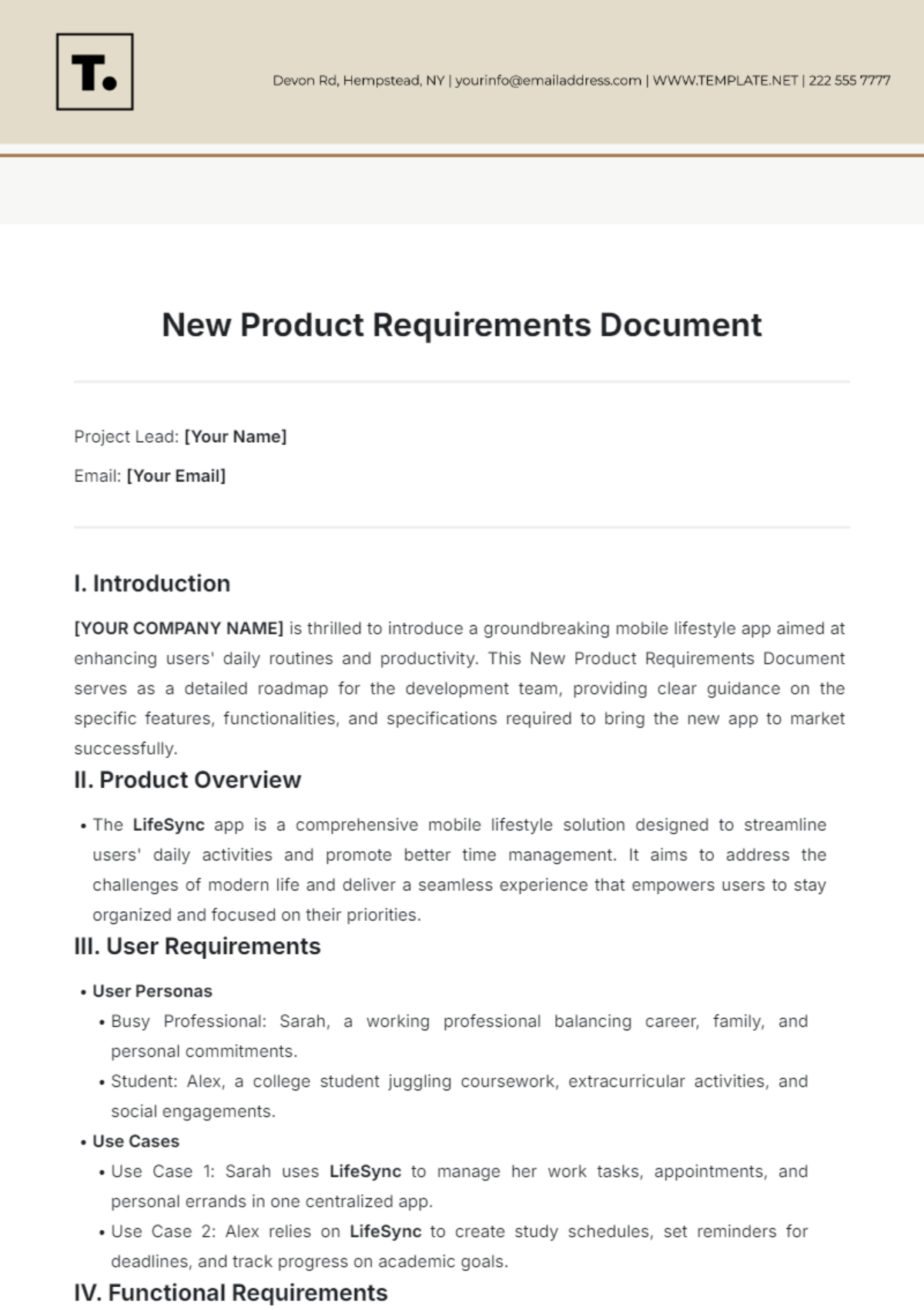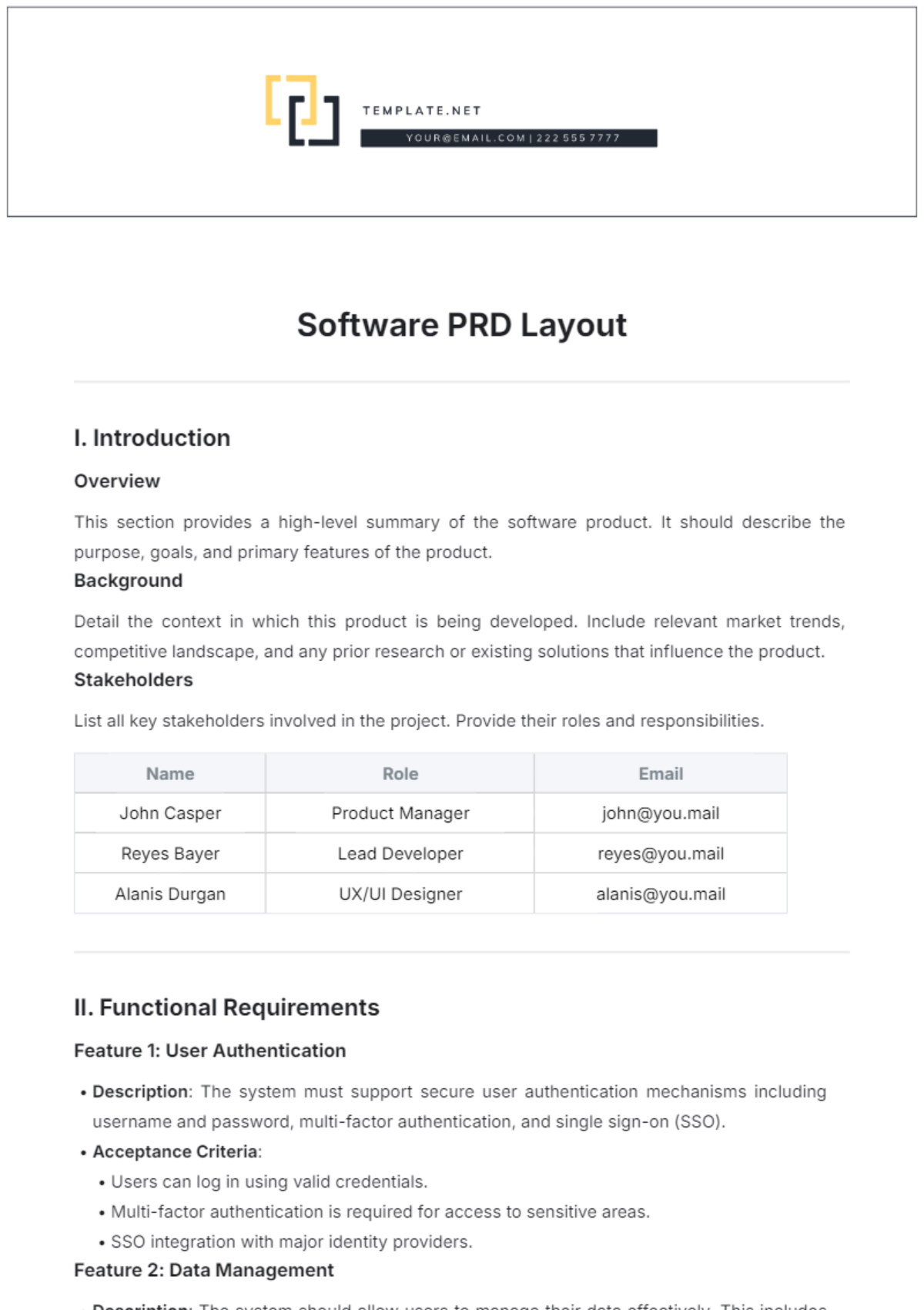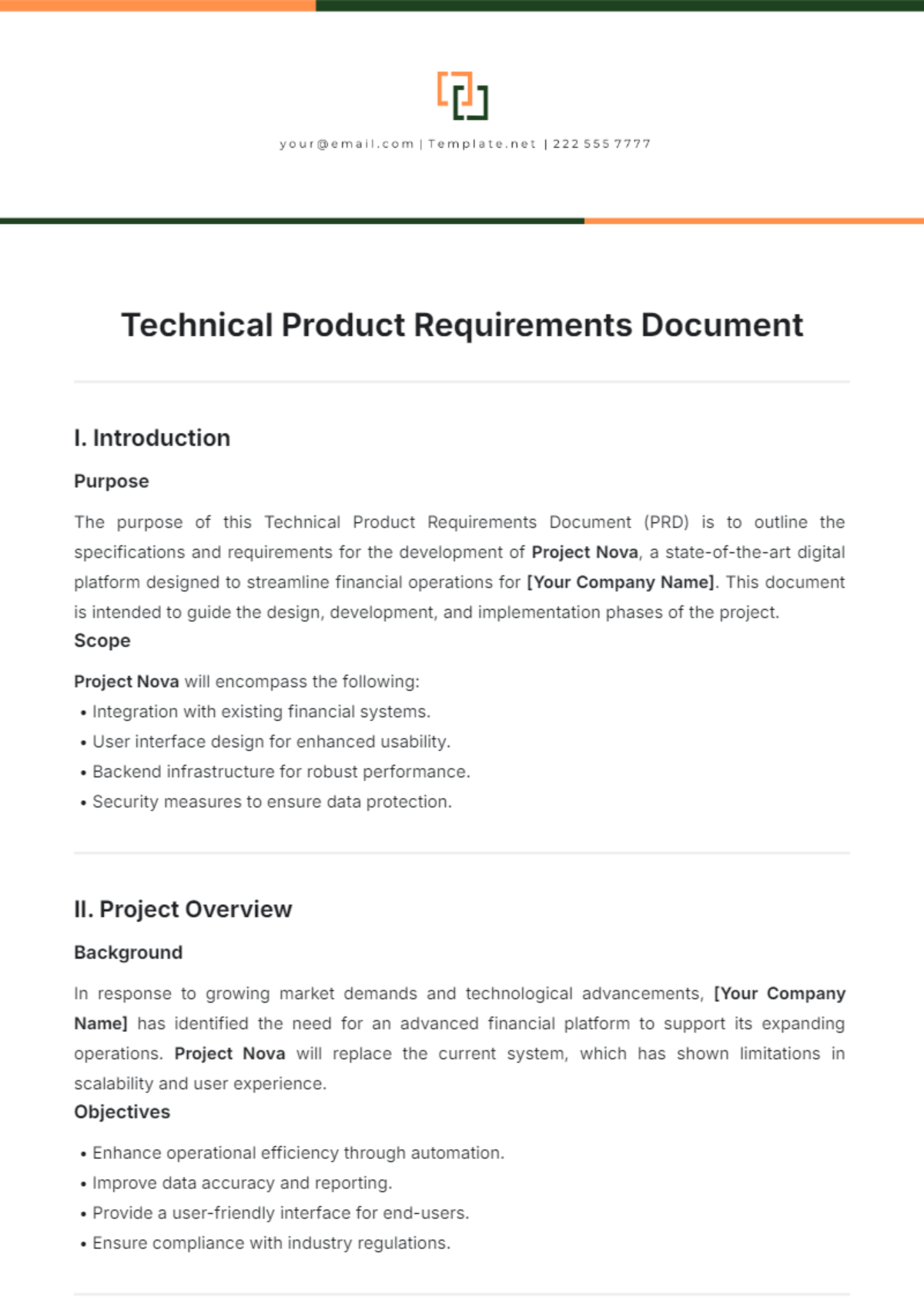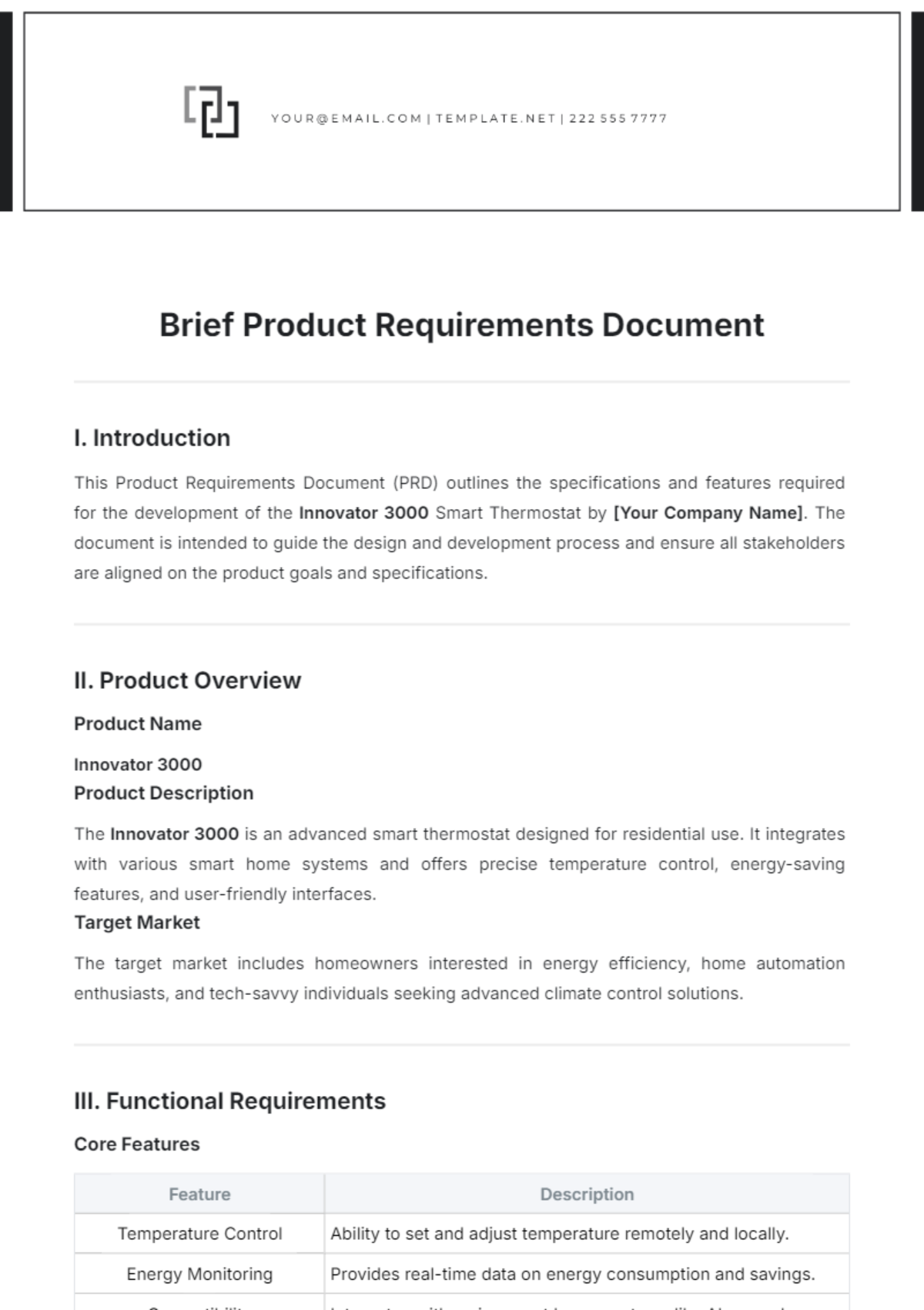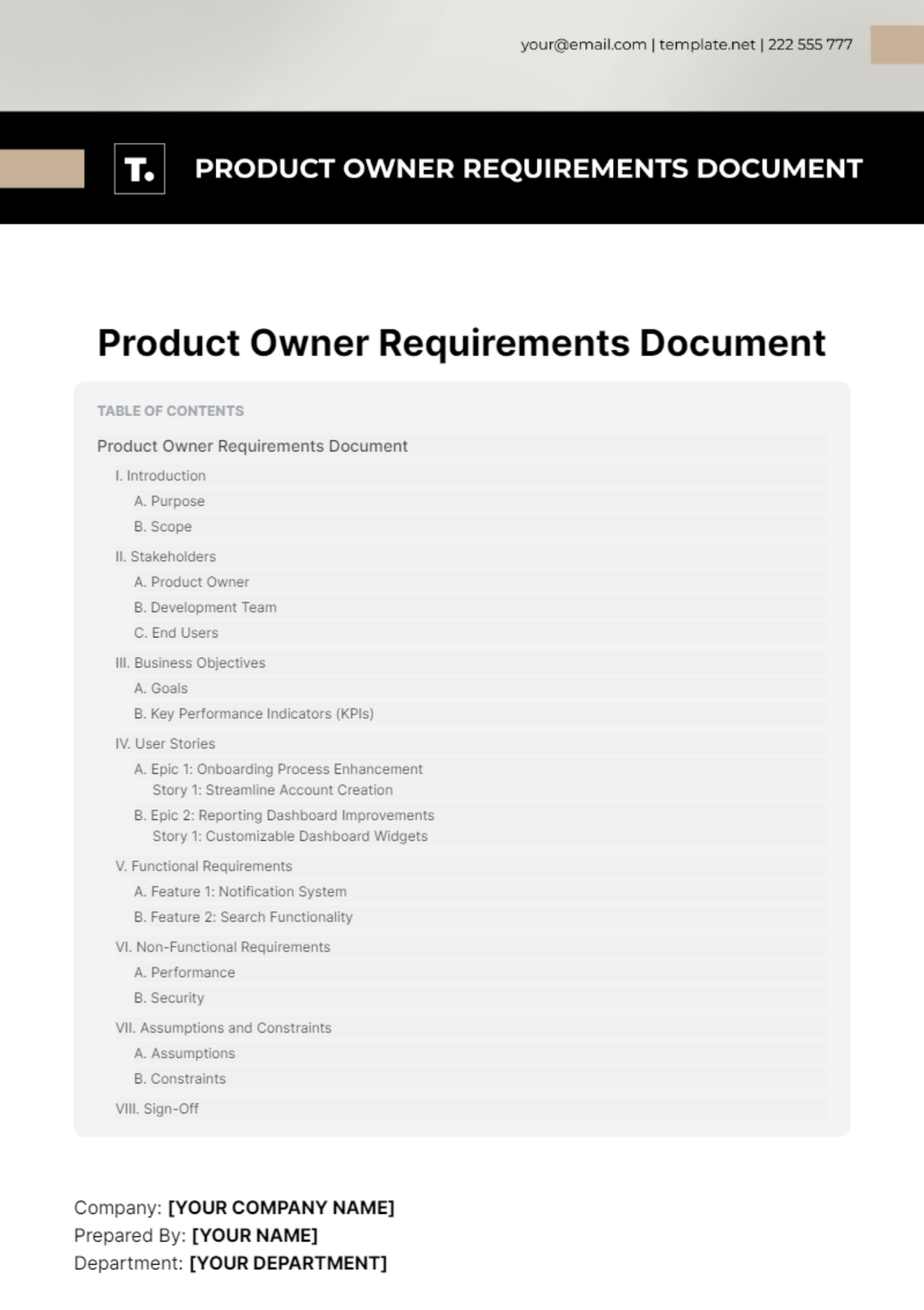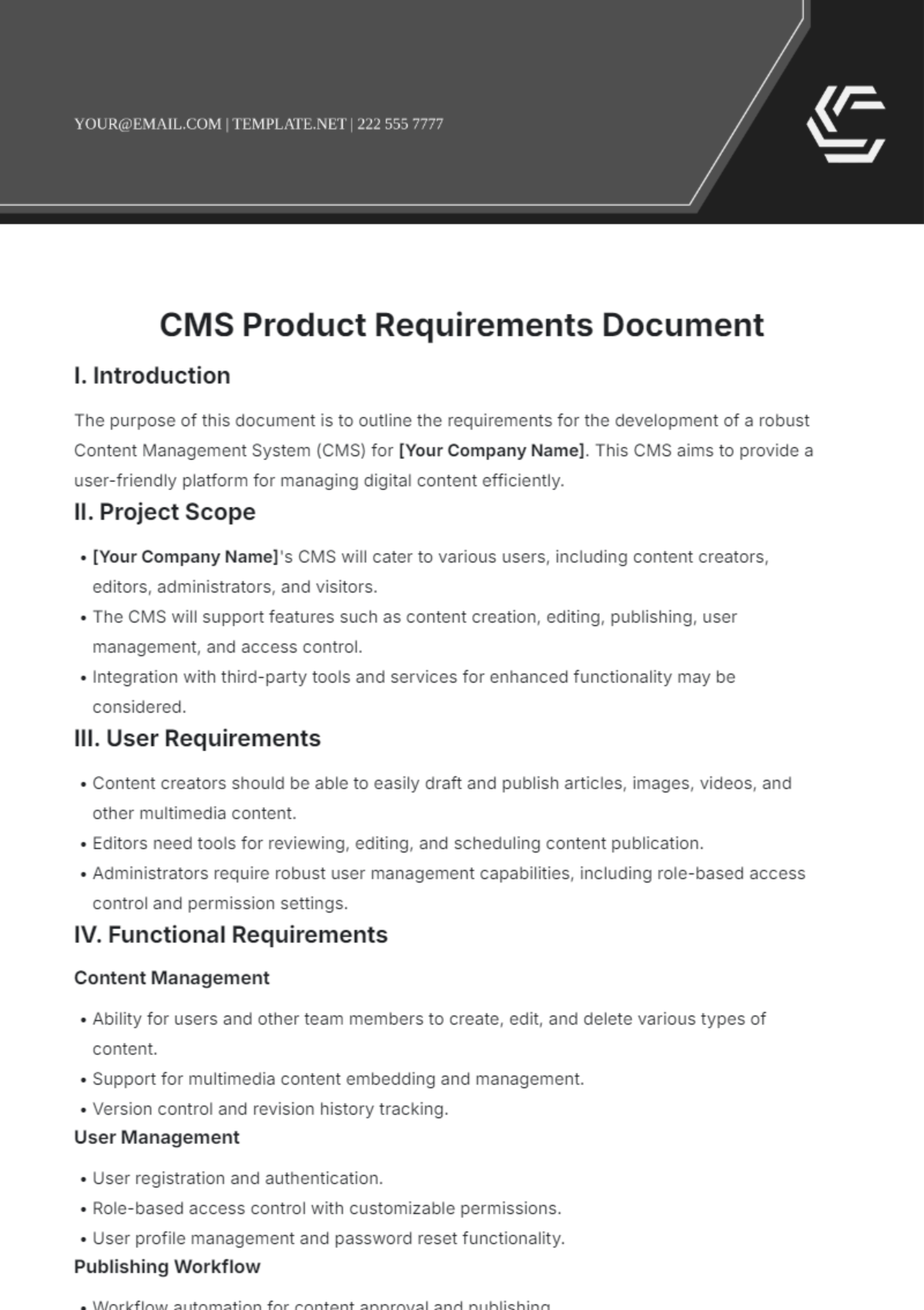CRM Product Requirements Document
I. Introduction
[Your Company Name] is embarking on a project to develop a cutting-edge CRM software solution to streamline customer interactions and enhance business processes.
This CRM Product Requirements Document (PRD) serves as a comprehensive guide to outline the scope, features, and functionality required for the successful development of the CRM system.
II. Business Requirements
[Your Department] stakeholders have identified the following key business needs driving the CRM project:
Increased customer engagement and retention.
Improved lead management and sales tracking.
Enhanced data analytics capabilities for decision-making.
III. Functional Requirements
For [Your Company Name]'s CRM system to be successful, it should include the following core functionalities:
Customer Contact Management:
Capture and store customer contact information, including name, email, phone number, and address.
Sales Pipeline Management:
Track leads, opportunities, and deals through the sales pipeline stages.
Reporting and Analytics:
Generate customizable reports and dashboards to analyze sales performance and customer data.
IV. Non-Functional Requirements
[Your Department] has specified the following non-functional requirements for the CRM solution:
Performance:
The system should support a minimum of 100,000 active users concurrently.
Security:
Implement role-based access control (RBAC) to restrict data access based on user roles.
Usability:
Ensure intuitive user interface design for ease of use and adoption.
V. System Architecture
The proposed system architecture for the CRM solution consists of:
A cloud-based infrastructure hosted on [Cloud Provider], ensuring scalability and reliability.
Integration with existing enterprise systems such as [ERP System] and [Marketing Automation Platform].
VI. Data Requirements
[Your Company Name] requires the CRM system to manage the following types of data:
Customer profiles, including demographics and purchase history.
Interaction logs, documenting customer inquiries and support tickets.
VII. User Interface Design
Mockups for the CRM user interface have been created, showcasing:
A dashboard displaying key performance indicators (KPIs) and sales metrics.
An intuitive contact management interface with search and filter capabilities.
VIII. Implementation Timeline
The development and deployment timeline for the CRM solution is as follows:
Start Date: [January 1, 2050]
Requirement gathering and analysis phase.
Development Start Date: [March 1, 2050]
Software development and testing phase.
Deployment Date: [July 1, 2050]
Rollout of the CRM solution to [Your Department] teams.
IX. Risks and Assumptions
Identified risks and assumptions for the CRM project include:
Risk:
Potential delays in data migration from legacy systems.
Assumption:
Availability of sufficient resources and expertise for system implementation.
X. Approval and Sign-Off
This CRM Product Requirements Document is subject to review and approval by stakeholders, including [Project Sponsor] and [Department Heads].
Date: [August 1, 2050]
XI. Feature Priority Table
Feature | Priority | Description |
|---|---|---|
Contact Management | High | Ability to capture and manage customer contact information, including name, email, and phone number. |
Sales Pipeline | Medium | Track leads, opportunities, and deals through various stages of the sales pipeline. |
Reporting Dashboard | High | Generate customizable reports and dashboards to analyze sales performance and customer data. |
This document is hereby approved by:
[Your Name]
[Your Company Name]








